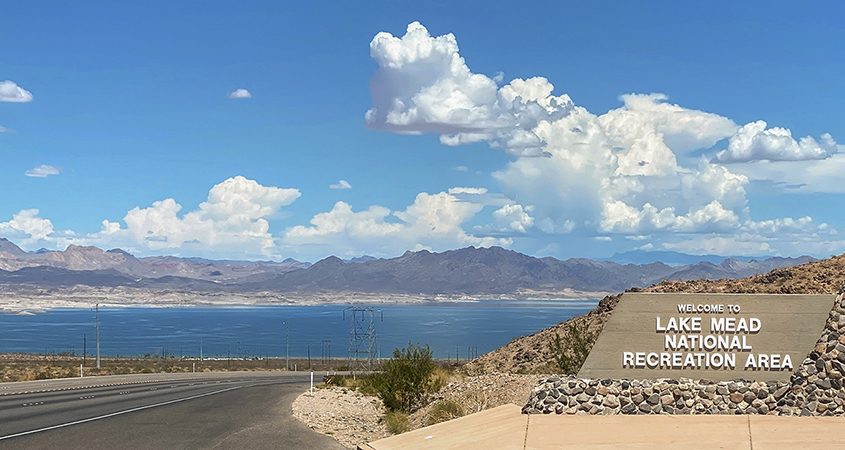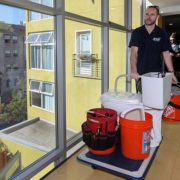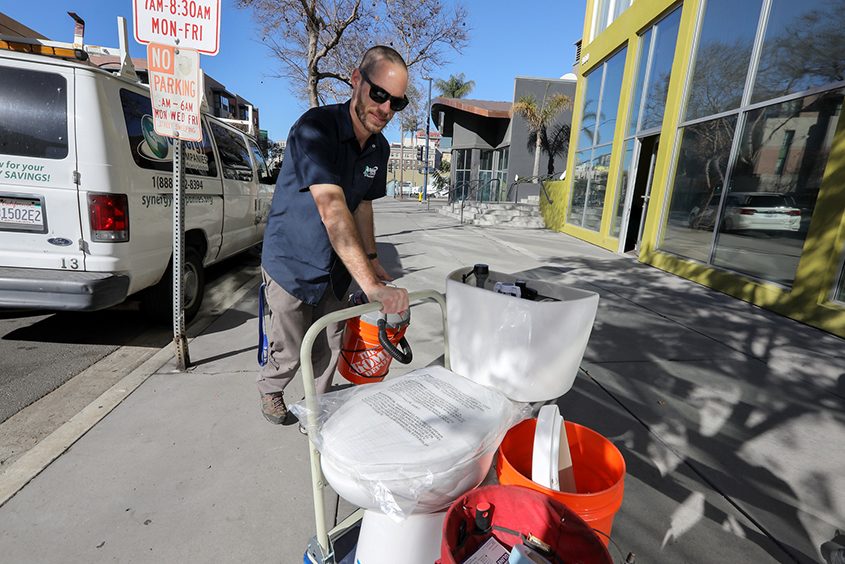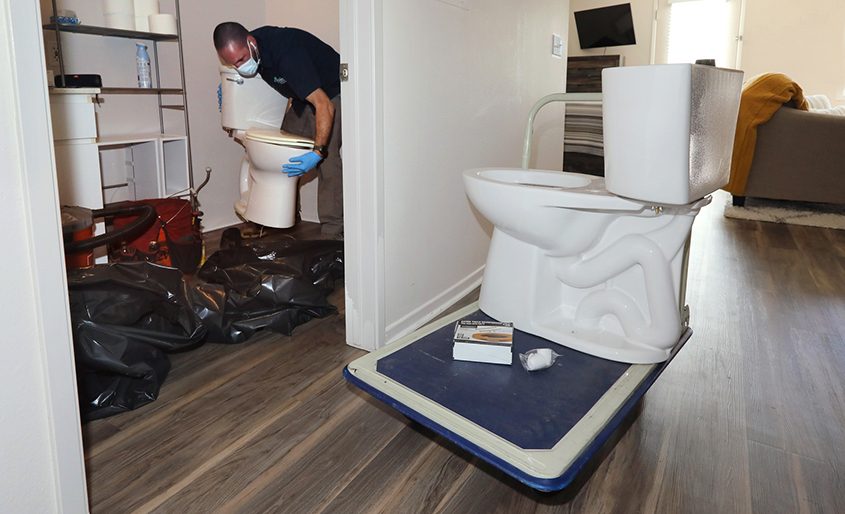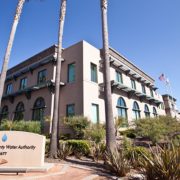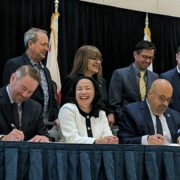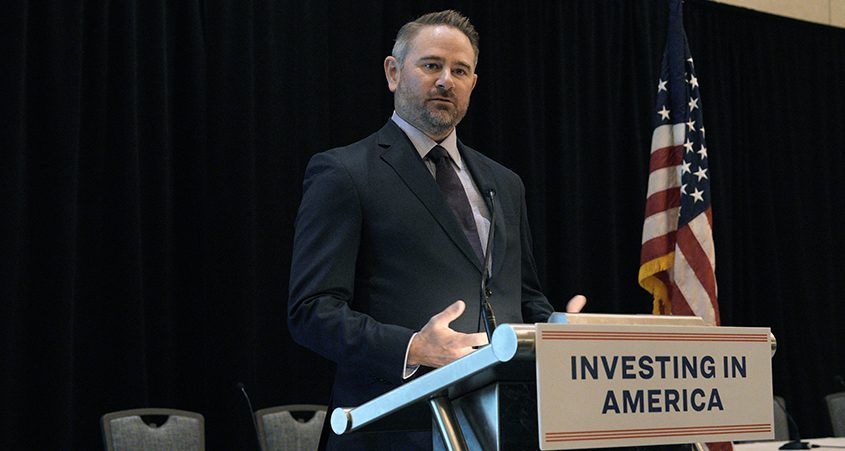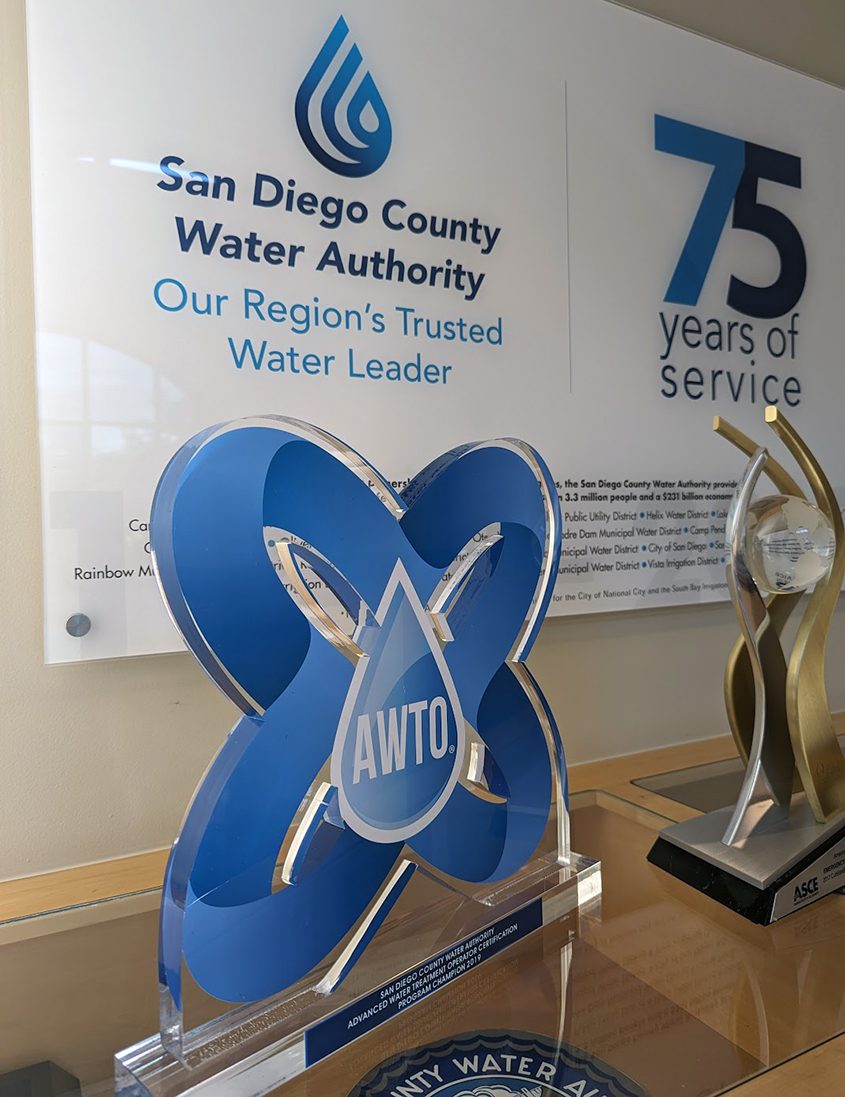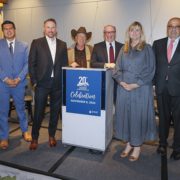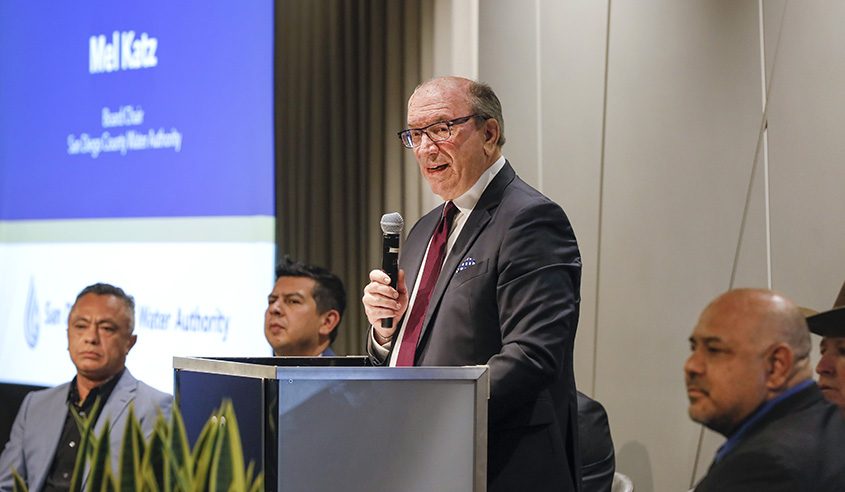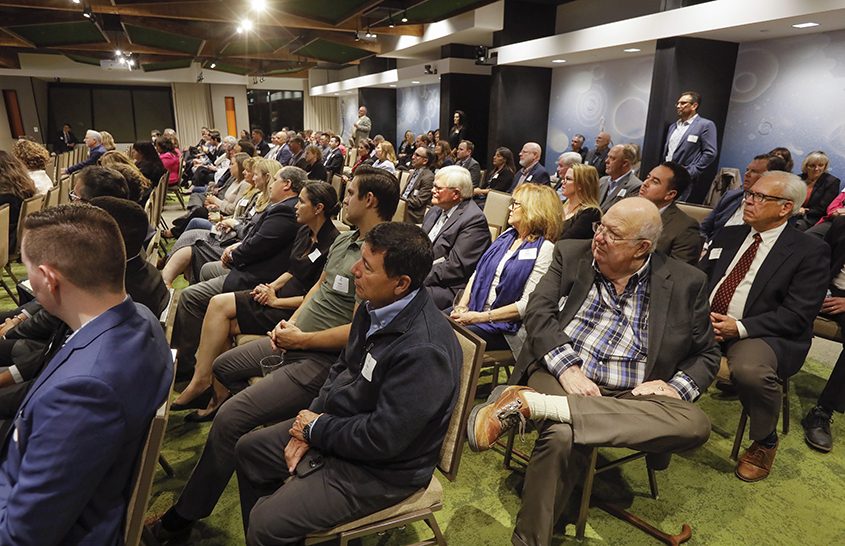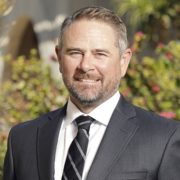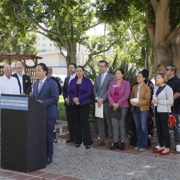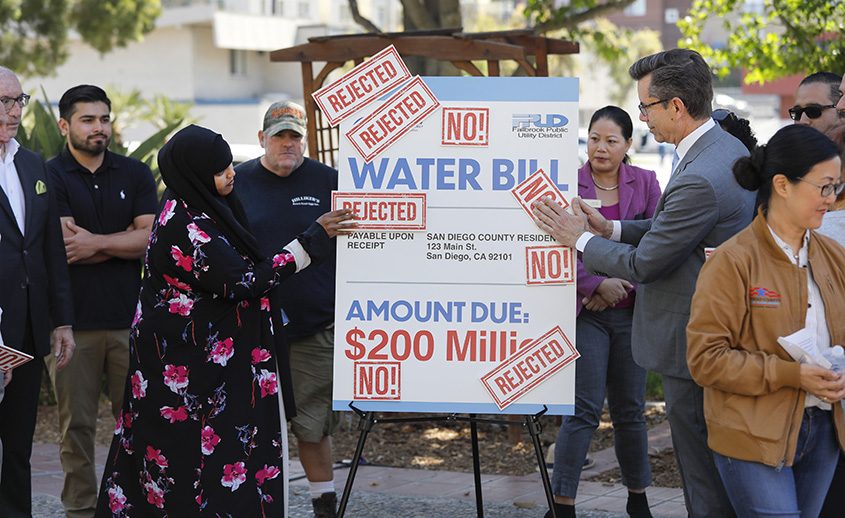Water Agencies Explore Innovative Transfer Deal for Drought-Resilient Water
For the second time in recent months, the San Diego County Water Authority is considering an innovative water transfer that could eventually deliver drought-resilient water supplies to South Orange County through the Moulton Niguel Water District and help combat increasing water rates for San Diegans.
Both districts have signed a Memorandum of Understanding MOU to begin discussions centering on the Water Authority transferring water supplies to Moulton Niguel, including from the Claude “Bud” Lewis Carlsbad Desalination Plant.
Agency leaders will determine the details, including when and how a transfer might take place.
The Moulton Niguel Water District serves more than 170,000 customers from Laguna Niguel to San Juan Capistrano.
Previous water transfer deal offers template
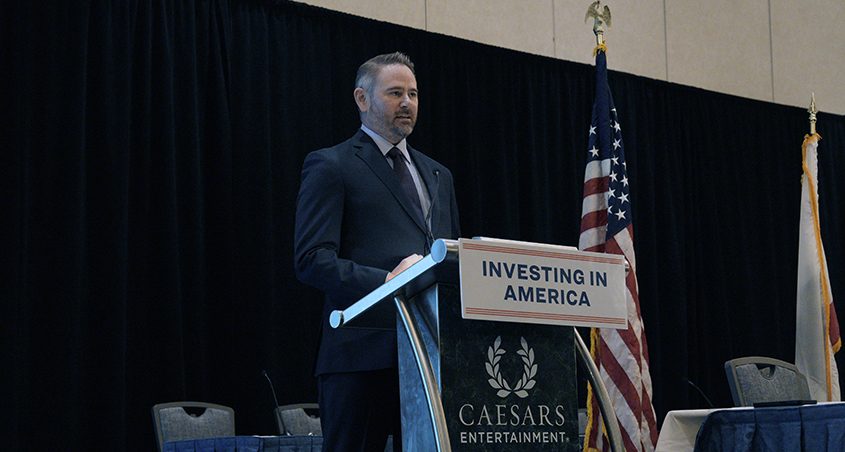
Water Authority General Manager Dan Denham speaks at the Dec. 13 signing ceremony in Las Vegas, supporting a set of agreements to sustain the Colorado River and save money for San Diego County water ratepayers. Photo: San Diego County Water Authority
In December, the Water Authority completed a similar agreement to transfer water with the Metropolitan Water District of Southern California and the Imperial Irrigation District. It saves the Water Authority between $15 million and $20 million while helping to raise the level of Lake Mead.
“The San Diego region’s investments in water supply reliability are being used to protect local ratepayers from rising costs while offering solutions that benefit the entire Southwest,” said Water Authority Board Chair Mel Katz. “We appreciate Moulton Niguel’s vision to explore this concept and we look forward to fashioning a mutually beneficial agreement.”
Moulton Niguel’s 2020 Long Range Water Reliability Plan and Water Reliability Policy prioritize the development and phased addition of new drought-proof water supplies to sustain its service area during droughts, which have hit California with increasing frequency over the past three decades.
“Our Board is committed to making cost-effective investments to enhance water supplies that benefit our service area in dry years, and a potential partnership with the Water Authority is another piece of that plan. In the era of climate extremes, it’s in everyone’s best interest to find partnerships that maintain our economy and quality of life,” said Moulton Niguel Board President Duane D. Cave.
Diverse water portfolio provides water reliability
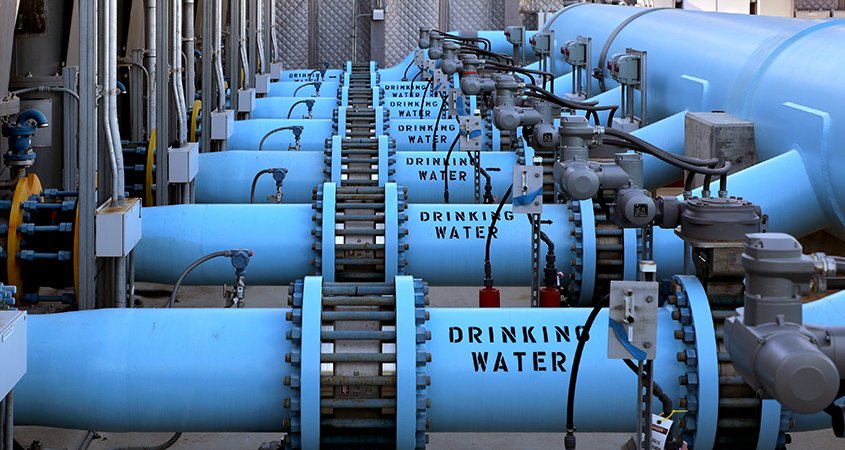
The Carlsbad plant uses reverse osmosis to produce approximately 10 percent of the region’s water supply; it is a core supply regardless of weather conditions, and it is blended with water from other sources for regional distribution. Photo: San Diego County Water Authority
Over the past 20 years, the Water Authority has developed a nationally recognized portfolio of drought-resilient water supplies, including the nation’s largest seawater desalination plant in Carlsbad. Completed in 2015, the facility produces up to 56,000 acre-feet of water a year, meeting about 10% of the region’s water demand.
San Diego region’s per capita water use has dropped by more than 50% during the same time. The reduction in water use by consumers allows the Water Authority to collaborate with other water providers on solutions to climate-induced supply challenges.

